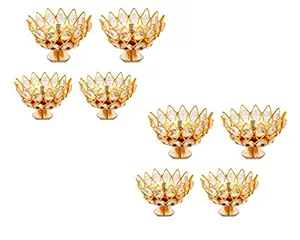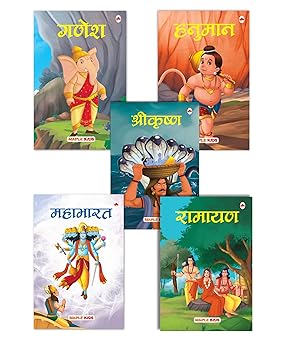Prema Sahita Nita Karuun Aaratii
Mahaakaalii Maiyaa Ki
Ari Dala Daranii Mangala Bharanii
Dukhaharinii Sukhadaiyaa Ki
Tuma Hii Agama Bhava Bharane Waali
Tuma Hii Jagata Laya Karane Waali
Tuma Hee Kashta Lakhi Nija Bhaktana Para
Aakara Turata Sahaiyaa Ki
Tumhin Prabala Ho Hari Kii Shakti
Rudra Bhava Shankara Kii Bhakti
Tumhin Janani Patavaara Banii
Ika Sevaka Sundara Naiyaa Kii
Introduction to Kali Maa Aarti
Who is Goddess Kali
Goddess Kali is the fierce and empowering form of the Divine Mother, embodying destruction of evil, transformation, and the primal cosmic energy (Shakti). She is worshipped to overcome darkness and nurtures spiritual awakening.
Myth & Mythological Tales
Legends narrate how Kali emerged from Goddess Durga’s wrath to defeat demons like Raktabīja, symbolizing the power of the Divine Feminine destroying proliferating negativity. Her imagery of garland of skulls, tongue out, dark complexion captures that fierce energy. :contentReference[oaicite:1]{index=1}
Scriptural References & Texts
Kali is mentioned in texts like the Devi Mahatmya, various Puranas, and tantric/folk traditions. Her worship has been part of both mainstream and folk Hindu practice for ages. :contentReference[oaicite:2]{index=2}
Symbolism in Her Form & Iconography
Every aspect of Kali’s depiction (dark skin, multiple arms, weapons, tongue, floral ornaments) holds symbolic meaning: the destruction of ego, time, illusion, and the continuous cycle of creation and dissolution. :contentReference[oaicite:3]{index=3}
Why Devotees Chant Kali Aarti
Devotees sing the Aarti to invoke Kali’s protection, to remove fear, to cleanse negativity from mind & environment, and to gain inner strength and courage in face of life’s challenges. :contentReference[oaicite:4]{index=4}
Lyrics & Meaning of Kali Maa Aarti
Original Lyrics and Transliteration
Present the original lyrics in Hindi/Sanskrit script along with transliteration so readers can follow, recite correctly and connect devotionally.
Translation into English / Regional Languages
Translation reveals what each verse asks for or praises: protection, destroying evil, blessings etc., helping non-native speakers understand the essence.
Verse-by-Verse Interpretation
Explain each verse: what it means symbolically, what aspects of Kali are invoked, how metaphors like ‘destroyer of Raktabīja’ or ‘protector in darkness’ relate to inner spiritual hurdles.
Key Terms & Epithets Explained
Words like ‘Mahākālī’, ‘Kālātītāyā’, or references to weapons, darkness etc., hold deep spiritual & philosophical significance. Clarify these for richer understanding.
Memorization & Pronunciation Tips
Recommend repeating small stanzas, listening to audio versions, using transliteration, group recitation, focusing on correct pronunciation & meaning rather than speed.
Rituals & How to Perform Kali Maa Aarti
Essential Items & Offerings
Typical items include lamp (diya), incense, flowers (often red or hibiscus), bell, prasad or sweets, water, a clean altar and devotional attitude; preparation with purity increases spiritual effect.
Auspicious Times & Festival Occasions
Evenings, nights, especially on Amavasya (new moon) or during Kali Puja days are considered very potent for worship; atmosphere of darkness intensifies the symbolism. :contentReference[oaicite:5]{index=5}
Step-by-Step Procedure
Clean the worship space, invoke Goddess Kali, light lamp and incense, recite the Aarti with devotion, offer flowers/prasad, ring bell, meditate after completion to absorb spiritual vibes.
Do’s & Don’ts During Rituals
Avoid mechanical recitation, impure offerings, disrespectful behavior, distractions; ensure sincerity, correct pronunciation, pure mind; maintain respect and humility.
Enhancing Devotional Ambience
Use soft light (lamps/diyas), incense fragrance, devotional music, melody, quiet environment, involvement of family or group singing to deepen devotion and experience.
Benefits & Significance of Kali Maa Aarti
Protection from Fear & Negativity
Chanting the Aarti invokes protection from fear, negative energies, evil influence; Kali is believed to guard devotees especially in times of adversity. :contentReference[oaicite:6]{index=6}
Inner Courage & Empowerment
Worship and listening to Kali Maa Aarti strengthens courage, self-trust, inner resolve, helping devotees face life’s difficult moments.
Spiritual Cleansing & Mental Peace
Her fierce energy also delivers purification—removing mental impurities, calming anxiety, bringing clarity and peace to the mind. :contentReference[oaicite:7]{index=7}
Granting of Blessings & Wishes
Many devotees believe that sincere performance of the Aarti leads to fulfilment of prayers, blessings for family, health, safety and prosperity.
Devotional Upliftment & Emotional Healing
Participating in the Aarti (singing/listening) offers solace, hope, emotional catharsis, fostering a sense of belonging and devotional peace.
Kali Maa Aarti in Temples & Community
Major Kali Temples & Worship Centres
Temples like Dakshineswar, Kalighat etc., are major centres of Kali devotion where Aarti is performed with large congregations especially during festival times.
Regional Variations in Melody & Language
Different regions have slight variations of the Aarti lyrics or tune (in verses, pronunciation, or accompanying instrumentation) reflecting local language and musical styles.
Multimedia & Downloadable Resources
Provide audio recordings, video performances, downloadable lyrics or PDF sheets to make the Aarti accessible and easier to learn for devotees across geographies.
How to Participate from Home
For those who can’t visit temples: doing Aarti at home, involving family, watching live temple Aarti videos, or singing with local community virtually helps maintain devotion.
Goddess Kali is the fierce and empowering form of the Divine Mother, embodying destruction of evil, transformation, and the primal cosmic energy (Shakti). She is worshipped to overcome darkness and nurtures spiritual awakening.
Legends narrate how Kali emerged from Goddess Durga’s wrath to defeat demons like Raktabīja, symbolizing the power of the Divine Feminine destroying proliferating negativity. Her imagery of garland of skulls, tongue out, dark complexion captures that fierce energy. :contentReference[oaicite:1]{index=1}
Kali is mentioned in texts like the Devi Mahatmya, various Puranas, and tantric/folk traditions. Her worship has been part of both mainstream and folk Hindu practice for ages. :contentReference[oaicite:2]{index=2}
Every aspect of Kali’s depiction (dark skin, multiple arms, weapons, tongue, floral ornaments) holds symbolic meaning: the destruction of ego, time, illusion, and the continuous cycle of creation and dissolution. :contentReference[oaicite:3]{index=3}
Devotees sing the Aarti to invoke Kali’s protection, to remove fear, to cleanse negativity from mind & environment, and to gain inner strength and courage in face of life’s challenges. :contentReference[oaicite:4]{index=4}
Present the original lyrics in Hindi/Sanskrit script along with transliteration so readers can follow, recite correctly and connect devotionally.
Translation reveals what each verse asks for or praises: protection, destroying evil, blessings etc., helping non-native speakers understand the essence.
Explain each verse: what it means symbolically, what aspects of Kali are invoked, how metaphors like ‘destroyer of Raktabīja’ or ‘protector in darkness’ relate to inner spiritual hurdles.
Words like ‘Mahākālī’, ‘Kālātītāyā’, or references to weapons, darkness etc., hold deep spiritual & philosophical significance. Clarify these for richer understanding.
Recommend repeating small stanzas, listening to audio versions, using transliteration, group recitation, focusing on correct pronunciation & meaning rather than speed.
Typical items include lamp (diya), incense, flowers (often red or hibiscus), bell, prasad or sweets, water, a clean altar and devotional attitude; preparation with purity increases spiritual effect.
Evenings, nights, especially on Amavasya (new moon) or during Kali Puja days are considered very potent for worship; atmosphere of darkness intensifies the symbolism. :contentReference[oaicite:5]{index=5}
Clean the worship space, invoke Goddess Kali, light lamp and incense, recite the Aarti with devotion, offer flowers/prasad, ring bell, meditate after completion to absorb spiritual vibes.
Avoid mechanical recitation, impure offerings, disrespectful behavior, distractions; ensure sincerity, correct pronunciation, pure mind; maintain respect and humility.
Use soft light (lamps/diyas), incense fragrance, devotional music, melody, quiet environment, involvement of family or group singing to deepen devotion and experience.
Chanting the Aarti invokes protection from fear, negative energies, evil influence; Kali is believed to guard devotees especially in times of adversity. :contentReference[oaicite:6]{index=6}
Worship and listening to Kali Maa Aarti strengthens courage, self-trust, inner resolve, helping devotees face life’s difficult moments.
Her fierce energy also delivers purification—removing mental impurities, calming anxiety, bringing clarity and peace to the mind. :contentReference[oaicite:7]{index=7}
Many devotees believe that sincere performance of the Aarti leads to fulfilment of prayers, blessings for family, health, safety and prosperity.
Participating in the Aarti (singing/listening) offers solace, hope, emotional catharsis, fostering a sense of belonging and devotional peace.
Temples like Dakshineswar, Kalighat etc., are major centres of Kali devotion where Aarti is performed with large congregations especially during festival times.
Different regions have slight variations of the Aarti lyrics or tune (in verses, pronunciation, or accompanying instrumentation) reflecting local language and musical styles.
Provide audio recordings, video performances, downloadable lyrics or PDF sheets to make the Aarti accessible and easier to learn for devotees across geographies.
For those who can’t visit temples: doing Aarti at home, involving family, watching live temple Aarti videos, or singing with local community virtually helps maintain devotion.


